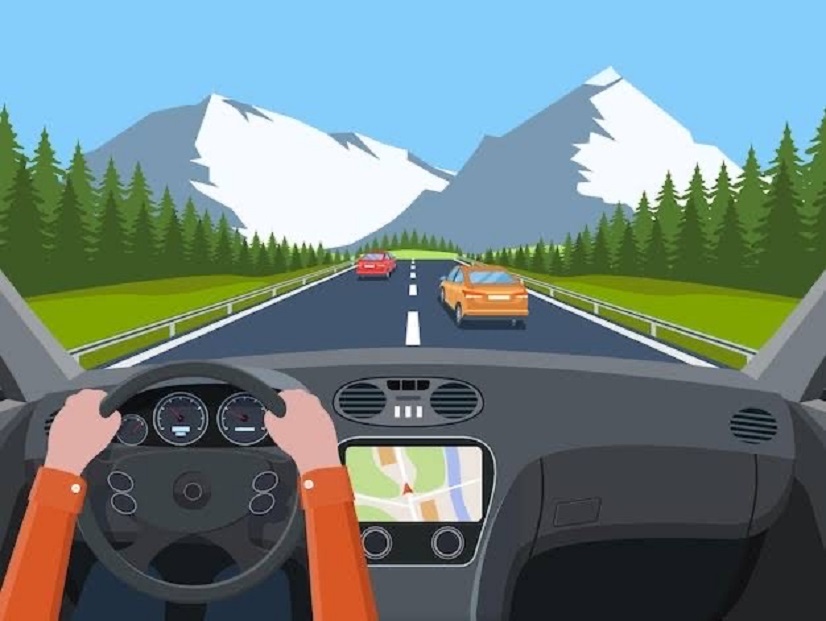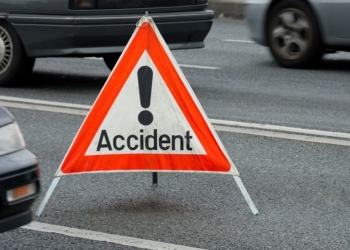
By Ikkz Ikbal
The recent spate of accidents in Kashmir has cast a grim shadow over the region, claiming lives and leaving many injured. These tragedies highlight a glaring issue: the alarming state of the public transport system, vehicles handed to minors, reckless driving, and inadequate monitoring of traffic violations. It is time to address these challenges and chart a path toward safer roads and a more efficient public transport network.
Road safety has become a pressing concern in the modern environment. Over the past few months, Kashmir has witnessed a disturbing rise in road accidents. Reports from various regions of Kashmir, including the recent Srinagar incident, highlight the severity of the issue. Multiple road accidents, many involving minors, have been attributed to rash driving, distracted drivers using mobile phones, and poor traffic management. The situation demands urgent attention to protect lives and restore order to our roads.
The Current Challenges
1. Parental Negligence:
Another contributing factor to road accidents is the growing trend of parents allowing their underage children to drive. Despite legal restrictions, many parents hand over their vehicles to minors, either due to convenience or underestimating the risks involved. This practice has resulted in a rise in accidents involving young, inexperienced drivers who are not equipped to handle the challenges of the road. There is a critical need for parents to understand the consequences of such decisions and to take a more responsible stance regarding vehicle usage by minors.
2. Lax Licensing Procedures:
One of the significant concerns is the ease with which driving licenses are issued. In many instances, licenses are granted without thorough testing or proper evaluation of driving skills. Shockingly, there have been cases where minors have obtained licenses, bypassing regulations that are meant to ensure safety. This lack of strict adherence to licensing rules leads to unprepared and inexperienced drivers on the road, increasing the risk of accidents.
3. Rash and Distracted Driving:
Reckless behavior, including speeding and mobile phone usage while driving, is a primary cause of accidents. This endangers not only the drivers themselves but also passengers and pedestrians.
4. Traffic Jams and Encroachments:
Unregulated traffic flow and obstructions, such as the occupation of roads by commercial establishments, significantly contribute to accidents. For instance, many reputed showrooms in Srinagar city have been blamed for creating traffic jams, which often lead to collisions.
5. Lack of Monitoring and Infrastructure:
The traffic management system in many cities is plagued by inefficiencies. Dysfunctional traffic lights in Srinagar and many other towns, inadequate zebra crossings, and the arbitrary behavior of public transport drivers further exacerbate the problem.
6. Ineffective Public Transport:
The so-called “smart city buses” operate without proper schedules or monitoring, causing frustration among commuters. Stops are made haphazardly, ignoring the principles of efficient public transport.
Role of Authorities
Traffic officials have taken a stand against open violations, particularly by passenger vehicles, but their efforts need to be bolstered. Merely issuing challans has proven insufficient to bring about long-term behavioral changes. There’s a pressing need for comprehensive measures:
Enforcement of Regulations:
Authorities need to enforce more stringent regulations around the issuance of driving licenses. A thorough evaluation process should be mandatory, ensuring that applicants possess the necessary skills and knowledge to drive safely. Additionally, there should be no loopholes allowing minors to acquire licenses. Random checks and audits of the licensing process could help maintain integrity and ensure that only eligible candidates are granted driving privileges.
Holding Parents Accountable:
Traffic authorities must also address the issue of parental negligence when it comes to allowing minors to drive. Implementing stricter penalties for parents who permit underage driving could deter this dangerous practice. Awareness campaigns should be conducted to educate parents on the potential consequences of handing over vehicles to inexperienced minors, emphasizing the legal and safety risks associated with such behavior.
Remove pressure horns and penalize their usage.
Ensure proper bus stops are established away from junctions.
Monitor and penalize reckless drivers, especially those using mobile phones while driving.
2. Revamping Infrastructure:
Repair and maintain traffic lights to ensure smooth operation.
Introduce well-marked zebra crossings and pedestrian zones.
3. Public Awareness and Education:
Educating citizens about the importance of adhering to traffic rules and respecting road safety norms can help create a culture of responsibility.
The Need for a Strong Public Transport System
A robust public transport system is the backbone of a safe and efficient city. Currently, the public transport system in cities like Srinagar fails to deliver on its promises. Smart buses need to live up to their name by adhering to strict schedules, predefined routes, and proper stops.
The introduction of a metro system, as previously rumored for Srinagar, could revolutionize urban transport. A well-planned metro network would reduce congestion, save time and money, and provide a reliable alternative to private vehicles. However, this requires political will, adequate funding, and meticulous planning.
The Way Ahead
While challenges persist, solutions are within reach. To improve road safety and public transport, a multi-pronged approach is necessary:
1. Adopt Technology:
Implement a modern traffic management system equipped with AI-based monitoring for violations and congestion.
2. Collaborate with Citizens:
Engage communities in awareness campaigns, making them active participants in road safety initiatives.
3. Upgrade Public Transport:
Transition from chaotic bus systems to a metro or BRT (Bus Rapid Transit) system for efficiency and reliability.
4. Shift Mindsets:
The ultimate transformation lies in fostering a culture where individuals obey laws out of respect for the collective good, not fear of fines.
A Collective Responsibility
In addition to improving infrastructure and public awareness, stricter enforcement of licensing regulations and parental accountability is crucial. Authorities must ensure that licenses are only issued to qualified individuals through comprehensive testing and evaluation. At the same time, parents must take responsibility and avoid allowing minors to drive, recognizing the serious risks involved. By tightening the licensing process and promoting responsible behavior among parents, we can significantly reduce the chances of accidents and foster a safer driving culture for everyone.
Accidents on Kashmir’s roads are not just numbers in a report; they represent shattered families, lost dreams, and a significant loss to society. Addressing this crisis requires collective responsibility. The government must lead with strong policies and swift action, but citizens, too, must play their part by adhering to traffic norms and advocating for safer practices.
The roads of Kashmir should be avenues for exploration and connection, not scenes of tragedy. By taking decisive action now, we can ensure that the region’s beauty is matched by the safety and efficiency of its transport system. Let the recent accidents serve as a wake-up call and a catalyst for change, steering Kashmir toward a future where its roads are as safe as they are scenic.
- Views expressed are the author’s own and do not necessarily represent the editorial stance of Kashmir Observer
Follow this link to join our WhatsApp group: Join Now
Be Part of Quality Journalism |
Quality journalism takes a lot of time, money and hard work to produce and despite all the hardships we still do it. Our reporters and editors are working overtime in Kashmir and beyond to cover what you care about, break big stories, and expose injustices that can change lives. Today more people are reading Kashmir Observer than ever, but only a handful are paying while advertising revenues are falling fast. |
| ACT NOW |
| MONTHLY | Rs 100 | |
| YEARLY | Rs 1000 | |
| LIFETIME | Rs 10000 | |













